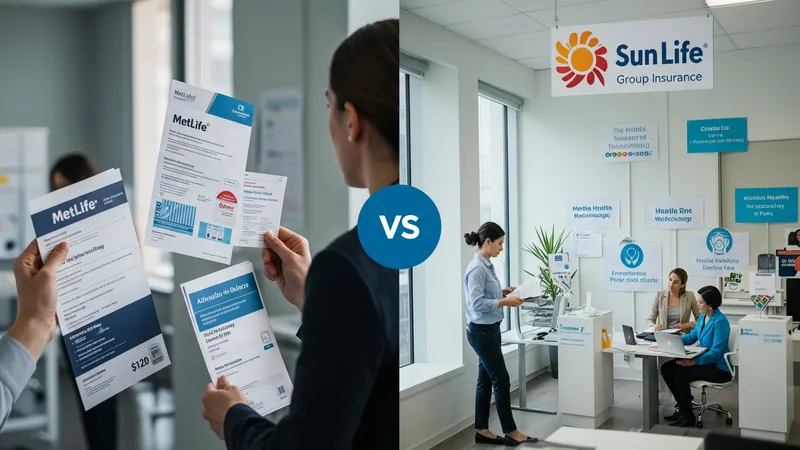

Modern corporations face rapidly changing workforces, diverse employee expectations, and complex regulatory environments. To remain competitive and attract top talent, organizations increasingly turn to insurance packages that aren’t one-size-fits-all. The fundamental idea: build customizable benefit bundles that align with each company’s specific workforce demographics, industry risks, and cultural values. Instead of standard off-the-shelf policies, these insurance arrangements empower companies to pick and personalize everything from coverage limits to optional wellness add-ons.
In this context, group insurance becomes a dynamic toolkit rather than a static policy. Companies can now select modular benefits encompassing life, health, accident, disability, and even supplemental protection. The result? Flexible offerings for teams ranging from remote tech startups to large manufacturing plants, all supported by smart usage analytics and seamless digital administration.

Personalized group plans stand out from traditional insurance by allowing companies to build coverage unique to their real-world needs. For example, a fintech firm might emphasize mental health and telemedicine options, while a logistics provider chooses robust accident protection and travel support. This adaptability means every business can design its own balance between core coverage and optional perks.
Crucially, these customized benefits improve employee engagement and satisfaction. Surveys have consistently shown that workers who feel their insurance matches their lifestyle and job risks report higher loyalty and reduced turnover. Flexible plans can also scale as organizations grow, letting benefits evolve without major disruptions or renegotiations.
From an administrative perspective, modern digital platforms streamline policy management, enrollment, and claims. Companies gain analytics dashboards to track participation trends, benefit utilization, and emerging needs. Meanwhile, employees enjoy simple self-service access, removing friction points that once plagued traditional group insurance plans.
These customizable arrangements give businesses a new lever for talent management and risk mitigation, especially in today’s hybrid and globally distributed work environments. While initial setup requires thoughtful planning, the long-term rewards in workforce retention and productivity can be substantial.
What unfolds next is a closer examination of key features and decision factors—revealing how tailored group insurance is transforming organizational strategy in surprising ways. The deeper details reveal even more valuable insights ahead…
One of the most distinct features of modern personalized group insurance is modular benefit selection. With providers like MetLife, Sun Life, and Prudential, companies can assemble a benefits package that truly reflects their workforce’s realities. This may include health coverage with optional dental, vision, or mental wellness support; or supplemental life and accident insurance layered as needed for more comprehensive protection.

Another critical feature is digital administration. Providers streamline everything from policy setup to employee enrollments and ongoing changes. With online dashboards, human resources teams receive instant access to plan analytics, real-time adjustments, and usage reports, allowing them to refine offerings as organizational needs shift.
Scalability is integral to these plans’ appeal. As startups mature into enterprises or expand into new regions, their insurance package adapts—adding or updating benefits to cover new roles and risk profiles. This flexibility means less administrative headache, but also positions companies to react more nimbly to talent market fluctuations or regulatory changes.
Personalization extends to communication tools as well. Engaging, easy-to-understand online portals mean employees can review their own benefits, submit claims digitally, and explore supplemental options without confusion. This clarity encourages greater plan utilization, which in turn maximizes perceived value for both employer and worker.
For employers, the advantages of tailored group insurance touch nearly every aspect of workforce management. Rich benefit menus help attract diverse talent, and powerful analytics let organizations monitor plan effectiveness and adjust proactively. Employers can tweak elements to fit budgets and goals, fostering an environment where staff feel valued and protected without wasteful overspending.

Employees, meanwhile, receive options that genuinely resonate with their lifestyles and vulnerabilities. A younger workforce might prioritize mental health support or telemedicine, while seasoned staff may gravitate toward robust long-term disability or supplemental life protection. This personal relevance directly enhances engagement and job satisfaction.
Retention is another pronounced benefit. Studies done on voluntary turnover consistently note that robust, relevant insurance benefit packages rank among the most influential factors in staff loyalty. Especially in highly competitive or volatile industries, custom-tailored group insurance can tip the balance in favor of sustained retention versus costly attrition.
For both employers and employees, the overall process is becoming less daunting. Modern platforms like those from MetLife, Sun Life, and Prudential make it easier to demystify insurance choices, reducing frustration and administrative workload while improving transparency across the board.
Comparing MetLife, Sun Life, and Prudential reveals nuanced differences in feature sets and pricing. MetLife’s strength lies in its breadth of coverage options and health, dental, and vision integration. Their baseline pricing of $120 per employee per year is competitive, with costs rising as employers add specialty coverages or enhanced limits.

Sun Life focuses heavily on wellness-related resources within its group plans, including mental health and preventive services. With packages usually ranging $110–$250 per participant per year, they appeal to companies wanting a deep focus on holistic wellbeing and health improvement initiatives.
Prudential distinguishes itself with flexible add-ons, including accident and voluntary life, making it an attractive pick for clients in higher-risk sectors or those seeking nuanced mixes of core and supplemental protection. Their plans often start at $85 per employee per year, and scale with additional selections.
All three providers now blend these options within cutting-edge digital environments, delivering instant access to coverage details and transparent reporting for employers. The best fit, therefore, depends on a company’s sector-specific needs and HR strategic vision.
Shaping an effective personalized group insurance strategy begins with a clear understanding of workforce demographics. For instance, a tech-driven company might design plans with heavy emphasis on flexible telehealth, while a construction firm may layer in accident and disability coverage more prominently. The chosen blend should evolve from detailed employee feedback and a company’s operational risk map.

Financial forecasting is also vital. Rather than simply picking ‘maximum’ coverage, employers can model benefit selections against historical claims and projected workforce changes to optimize both protection and cost efficiency. Providers like MetLife, Sun Life, and Prudential all offer robust analytics that inform this balancing act.
A forward-looking insurance plan must anticipate regulatory developments. By using providers with adaptive compliance features, organizations can pivot quickly to meet new rules—particularly important for companies operating across several jurisdictions or international regions.
Finally, successful implementation depends on communication and education. Even the most dynamic, personalized benefits are only as effective as employees’ awareness and understanding. User-friendly platforms help bridge this gap, but thoughtful rollout strategies—like info sessions and interactive tools—multiply the impact of these evolved group insurance plans.